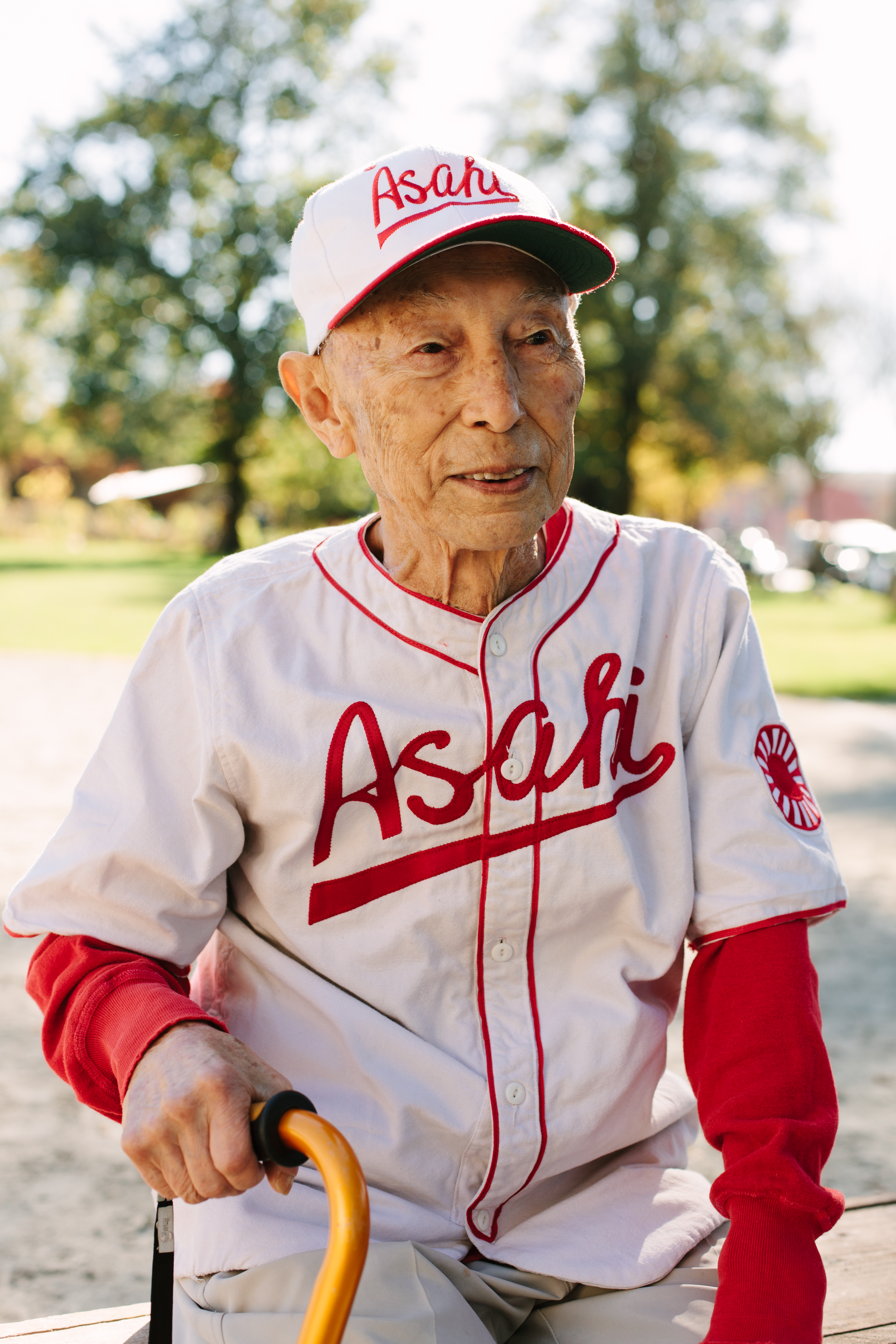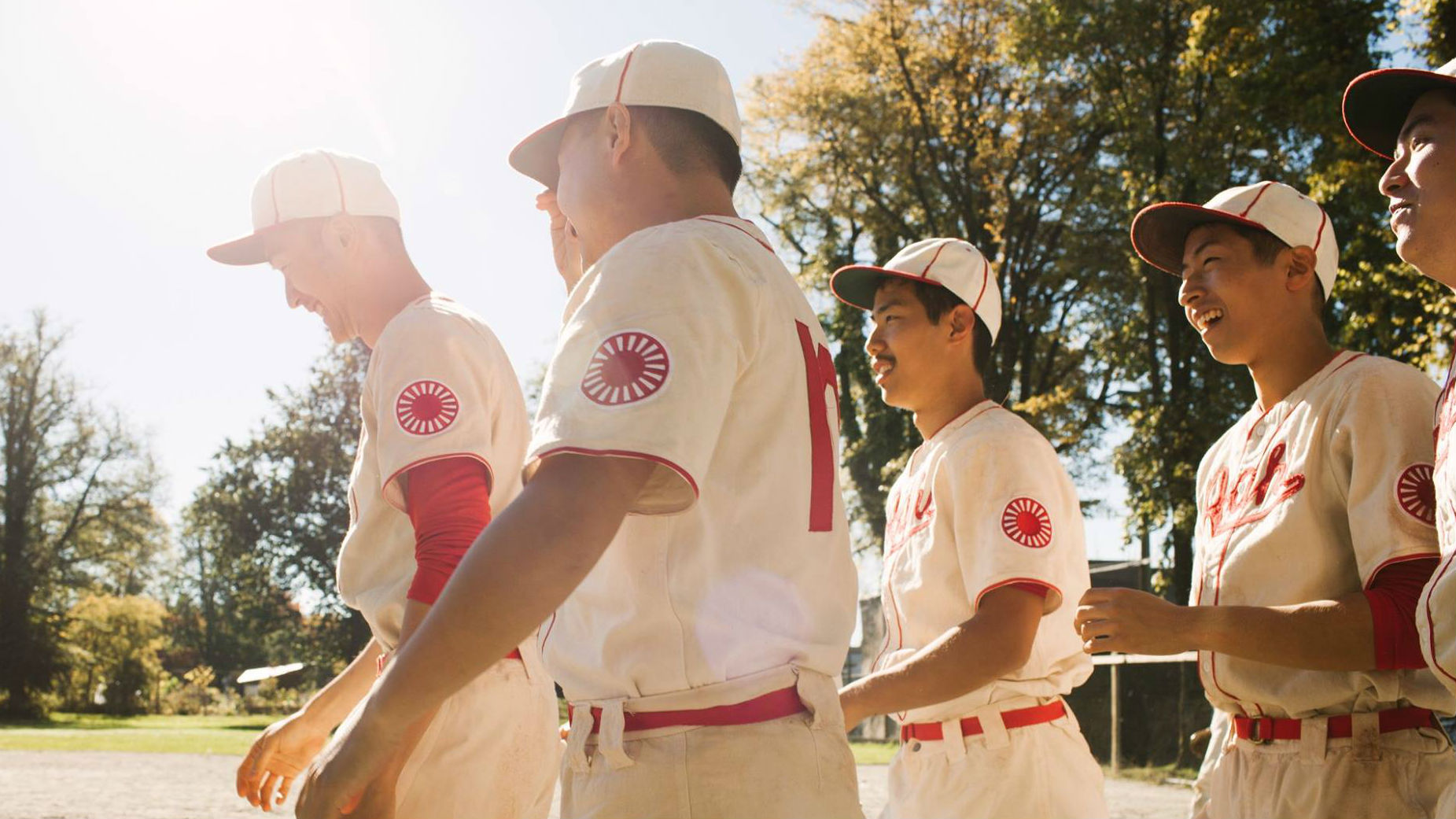During the early 20th century in racially segregated Vancouver, nothing brought the Japanese-Canadian community together like baseball.
The Downtown Eastside neighbourhood known as ‘Japantown,’ where thousands of Japanese immigrants had settled as early as 1877, would virtually shut down as multiple generations of Japanese-Canadian families congregated at Oppenheimer Park near Powell and Main Street. Businesses closed, schools let out early, and if there happened to be a Sunday game the church was empty, too.
They came to watch the Vancouver Asahi, an amateur team made up entirely of Japanese-Canadian players. Parents brought their children, who idolized the players and picked up bats and gloves in droves to emulate them, while grandparents memorized box scores and cheered along their local heroes.
“My father loved baseball,” recalls Pat Adachi, who was born in Vancouver after her parents moved there from Japan at the turn of the century. 98 years-old today and still going strong, she’s considered Canada’s preeminent Asahi historian and authored the book Asahi: A Legacy in Baseball. “I was an only child, so he used to take me with him to the games. And that was from about the age of eight years old.”
The Asahi quickly built a reputation as a gifted — and winning — outfit, but, after nearly 30 years, they were forced to disband following the internment of 22,000 Japanese-Canadians as ordered by the federal government.
Founded in 1914, the Asahi initially played against other teams of Japanese-Canadians but soon found themselves competing against other local teams in Vancouver’s city league, facing noticeably larger, power-hitting players from the city’s white communities.
“The opposition was all brawn, and strong,” Adachi recalls from her retirement home in Scarborough, Ont. “They were longshoremen, firemen, and the Japanese were small in stature by comparison. So, they had to think of a way to compete.”
Under the guidance of manager Harry Miyasaki, who took over the team in 1922, the Asahi devised a playing style he called “Brain Ball” that was predicated on using well-timed bunts, squeeze plays, and other tactical strategies.
“They were skilled in fielding and could steal bases, and that’s how they won their games,” says Adachi.
And they won plenty. Their first city league title came in 1926 and would be followed by several more, including six straight between 1936 and 1941.
While their exciting playing style brought in onlookers and fans from all backgrounds, their otherness was never forgotten by the local Canadians, who sometimes chased players off the field.

“We were born in Canada. We spoke English. On the streets we weren’t welcome, but on the field, we were the Asahi: Vancouver’s champions,” says Kaye Kaminishi in the latest Heritage Minute released by Historica Canada Wednesday. The Heritage Minute examines the Asahi’s enduring if under-told legacy, including Kaminishi, who was 16 years old when he first joined the team in 1939.
Whatever inroads had been made between the Japanese-Canadians and their non-Japanese neighbours in Vancouver came to a drastic halt in December of 1941 following the bombing of Pearl Harbour.
At the time, roughly 75 per cent of the Japanese-Canadians had been born in Canada, but that didn’t stop then-Prime Minister William Lyon Mackenzie King from declaring all of Canada’s Japanese community enemy aliens in the wake of the attack.
“Most of us in the second generation were born in Canada. That didn’t matter,” says Adachi. “We had veterans from the First World War that fought for Britain and Canada. They had been at Vimy Ridge, Dunkirk … Didn’t matter. We were all enemy aliens.”
In February of 1942, Mckenzie King invoked the War Measures Act. Suddenly, curfews were placed on Japanese-Canadians and their property was seized by the government, along with any vehicles, radios, and cameras. Japanese-Canadians were banned from living within 100 miles of the coast. By March most men, including Pat Adachi’s father, were taken to road camps and forced to carry out labour.
The families that remained were given 24 hours’ notice and then forced to vacate their homes, allowed to take only two suitcases with them. At first, many were sent to Vancouver’s exhibition grounds and placed in animal stalls.
That June, Adachi’s husband was among a wave of Japanese-Canadians dispersed to ghost towns deep in the B.C. Rockies — abandoned mining settlements with no running water or livable housing. By August of 1942, women and children followed.
“We were put on these dusty trains and moved out,” remembers Adachi, who was 21 years old at the time. “We didn’t know where we were going.”
Nine long hours later they reached their destination in the Kootenay Valley. The winter of 1942 was a harrowing one, with frigid temperatures and inadequate facilities.
But the interned Japanese-Canadians weren’t deterred. “Our first generation — our parents — were very resilient. They didn’t sit around complaining about what the government had done,” says Adachi. “They got busy and made gardens; somebody had the foresight to bring seeds. They made gardens and grew their vegetables.”
Gradually, in a continued attempt to regain some element of normalcy, baseball reappeared. Like everyone else, the Asahi team members had been dispersed among the many camps, but several managed to bring basic equipment — and their iconic jerseys.
Young team members like Kaye Kaminshi, who was moved to a camp in East Lillooet, rounded up volunteers to clear land and build a baseball diamond. Rice sacks were filled with dirt to serve as the bases and pitching mounds were build. Soon enough baseball was back and the community again gathered to watch games featuring a mix of former Asahi players and whoever else wanted to join.
The same was occurring in camps throughout the Slocan Valley area, with Asahi alumni leading the charge and teaching “Brain Ball” to generations of Japanese-Canadians once again.
In East Lillooet, the RCMP officers in charge of the camps allowed Kaminshi and his team to cross the bridge to play games against the white community, as the seeds of desegregation were planted. He would later recall the moment as the first time he felt “real freedom” since the internment began.
“There were still some local people who were suspicious of the Japanese,” Adachi says. “Then they saw them playing baseball and forgot all about ‘the enemy’ and came out to root for them just as they had in Vancouver.”
By 1943 the camp teams joined together to create a tournament, the Slocan Valley Championships. Four teams competed, with both whites and interned Japanese-Canadians on hand to watch. The championship game came down to the wire, with a team from Lemon Creek winning it all in the bottom of the ninth. In typical Asahi fashion, the game was won on a squeeze play.
In the decades that followed, the story of the Asahi and Japanese internment in Canada was largely forgotten, though recent efforts have been made to tell their incredible tale.

“I’d heard of them but never knew the extent to which their legacy lived on,” says 36-year-old Scooter Corkle, the director of the new Heritage Minute video on the Asahi. Corkle, who was raised near the site of the internment camps in B.C.’s Kootenay Valley, calls the opportunity “an immense honour.”
In 2003 the Vancouver Asahi were inducted into the Canadian Baseball Hall of Fame. That year, the National Film Board released a documentary, Sleeping Tigers: The Asahi Baseball Story, and in 2014 a Japanese feature film was made about the team. Last winter, the Canada Post announced that it will release a national stamp honouring the team.
Through it all is an increasingly-prevailing notion that it is critical to keep re-telling the story of the 22,000 interned Japanese-Canadians.
“The younger generation today would have fought back,” Adachi says, looking back on the experience. “They ask me, ‘Why didn’t you fight back?’ We were all law-abiding citizens. We always believed that you obeyed the rules — and that was a creed with the Asahi baseball team. They never argued with the umpire, no matter how wrong he was. This was what the fans loved about them, their sportsmanship. Win or lose they were always good sports.”
[relatedlinks]









